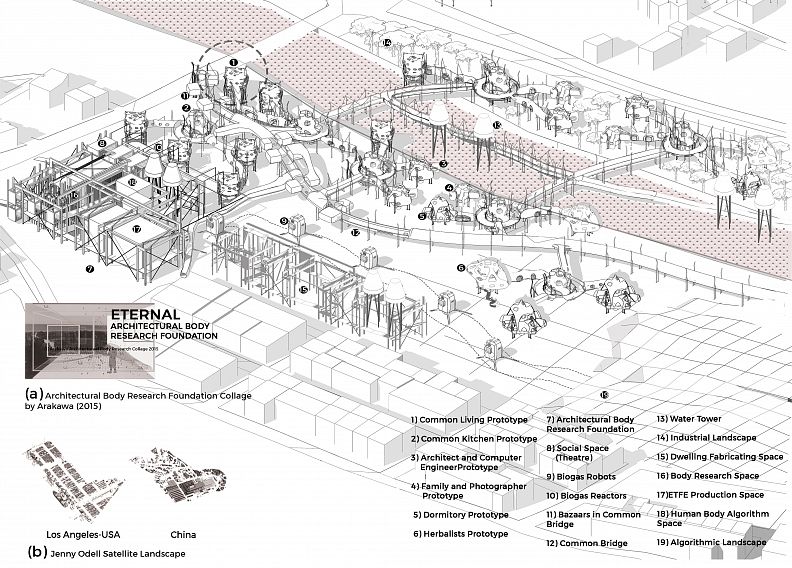ETERNAL ( Architectural Body Research Foundation)

Idea projektu
In the 21st century, the user should be defined by rethinking the relationship between the dwelling and the landscape, industrial processes. Because even though the century we live is the century with industrial processes, we are not in these processes. Although Çan / Çanakkale, where the project area is located, is defined as having an industrial typology and a place where industrial processes operate, how much the users are involved in this process remains ambiguous. It is precisely at this point that we can defend the satellite landscapes that Jenny Odell has given (quote with [b] letter in the sheet).
Popis projektu
What kind of interaction do potential connections in this process create? For example, in life cycles that have been observed since the age of cave hunting and habitats, users seem to have more effective life cycles, that is, even during hunting gathering, the user can both work (produce and consume their basic needs at the same time and in the same place), but nowadays this situation it has changed completely in today's century; We are faced with models that are doomed to a universal coordinate plane and forget about themselves, that is, their life cycle is stationary (self-discerning).
It would be correct to explain this situation with a collage that explains "The expansion of the body and life in connection with our 5 senses" which is intended to be described in the collage "Eternal" named after Arakawa (quote with letter [a] in the sheet). Describing user actions, redefining body and space relationships, the collage describes the parameters of these two relationships. In other words, modern society caused us to produce horizontal and vertical houses that cut, isolate and protect us from the external environment. As a result, perceptions between the user and the world were limited.
The project, which started by redefining the traditional relationships between the user actions, body, building, and landscape, to encourage the future human body to move in space and to evaluate these users' life cycles by themselves: After establishing the Architectural Human Research Foundation (factory), to discover the habitats and lifestyles are encouraged. Users forward the necessary algorithms to the robots in the established factory. Using this data, robots start to produce habitats according to the data and this production is coded to give each user the same cubic meter.
With biogas robots, energy is generated from industrial wastes in the idle area and this energy is transferred to fiber robots. Habitats that develop along the edge of the water spread like an organism, allowing the water to be reused. Spreading using user data, this mechanism (MIT-fiber robots) records the time the user spends in the habitat, current movements, and even aperture calculations based on lung volume. It transforms first into common living spaces and then into habitats established with home-office TYPOLOGY. Thus, industrial and domestic processes are fused.
Technické informace
The project's details show that how to create one module with one raw material. These prototypes are produced with fiberglass raw material
by MIT Alien Like Robots.
Bio gas is provided natural energy to MIT Alien Like Robots.
This raw material is transformed to structural material by
UV heat and hanging to the steel structure like a spider.




















